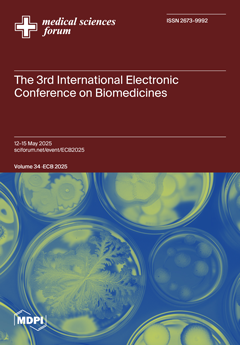Med. Sci. Forum, 2025, ECB 2025
The 3rd International Electronic Conference on Biomedicines
Online | 12–15 May 2025
Volume Editors:
Felipe Fregni, Harvard Medical School, USA
Allan Stensballe, Aalborg University, Denmark
Georgia Levidou, Klinikum Nuremberg, Germany
Serafino Fazio, Federico II University of Naples, Italy
- Issues are regarded as officially published after their release is announced to the table of contents alert mailing list.
- You may sign up for e-mail alerts to receive table of contents of newly released issues.
- PDF is the official format for papers published in both, html and pdf forms. To view the papers in pdf format, click on the "PDF Full-text" link, and use the free Adobe Reader to open them.



